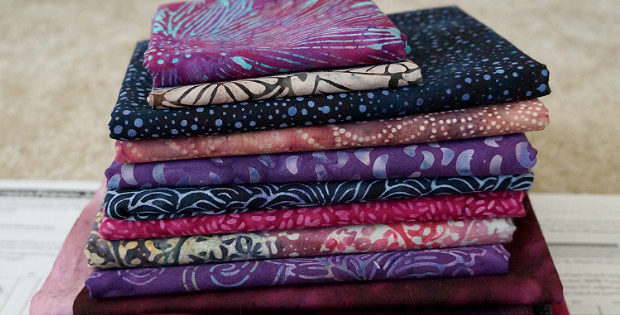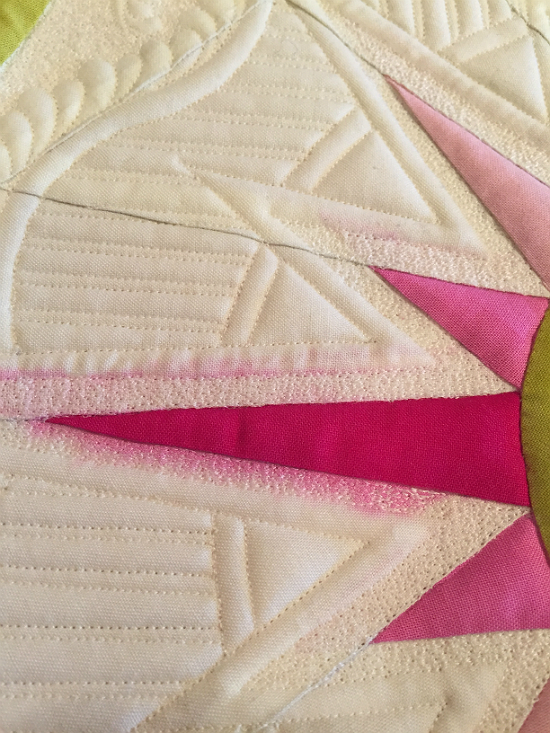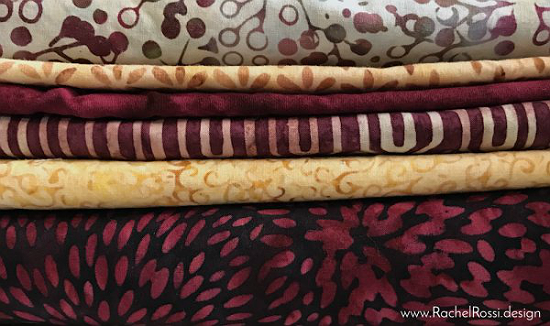Don’t Cut Those Batiks Before You Do This

Pre-treat the Fabric and Prevent Problems Later!
Batiks are notorious for bleeding, as are prints in certain colors. Red, navy and purple prints and solids often bleed, but so can any fabric, especially those that are hand-dyed (learn how to test for bleeding here).
While some quilters avoid pre-washing and swear by washing a finished quilt in salt or vinegar water to set the dye, that’s not foolproof. Neither are color catcher sheets. After all, “What to Do if Your Quilt Bleeds” is one of our most popular posts!
That’s why it’s a good idea to pre-treat fabrics that are most likely to bleed (like batiks), before cutting and sewing them into a quilt. While pre-washing is always a good idea for removing loose dye, that sometimes doesn’t get it all.
This hand-dyed fabric was pre-washed. Learn more here.
Retayne is made specifically for setting dye and works on most types of fabric. However, it’s a good idea to test treated fabric by washing small pieces with a color catcher sheet. If the sheet comes out less then pristine white, you may want to treat the fabric again.
You’ll find a lot of helpful information about using Retayne in the following article by Rachel Rossi.
Retayne can be purchased here.
Yes, pre-treating fabric takes time, which can be annoying when you’re ready to jump into a new project. And, some quilters prefer working with crisp new fabric and are willing to take their chances.
However, the delay is worth it if it saves you from having your new quilt bleed. Plus, you can return a treated or pre-washed fabric to a nice crisp state by using starch or sizing. Learn more about those here.
Image Source: The photo at the top of the page is from Two Purple Couches.













